Back
[Case 03]
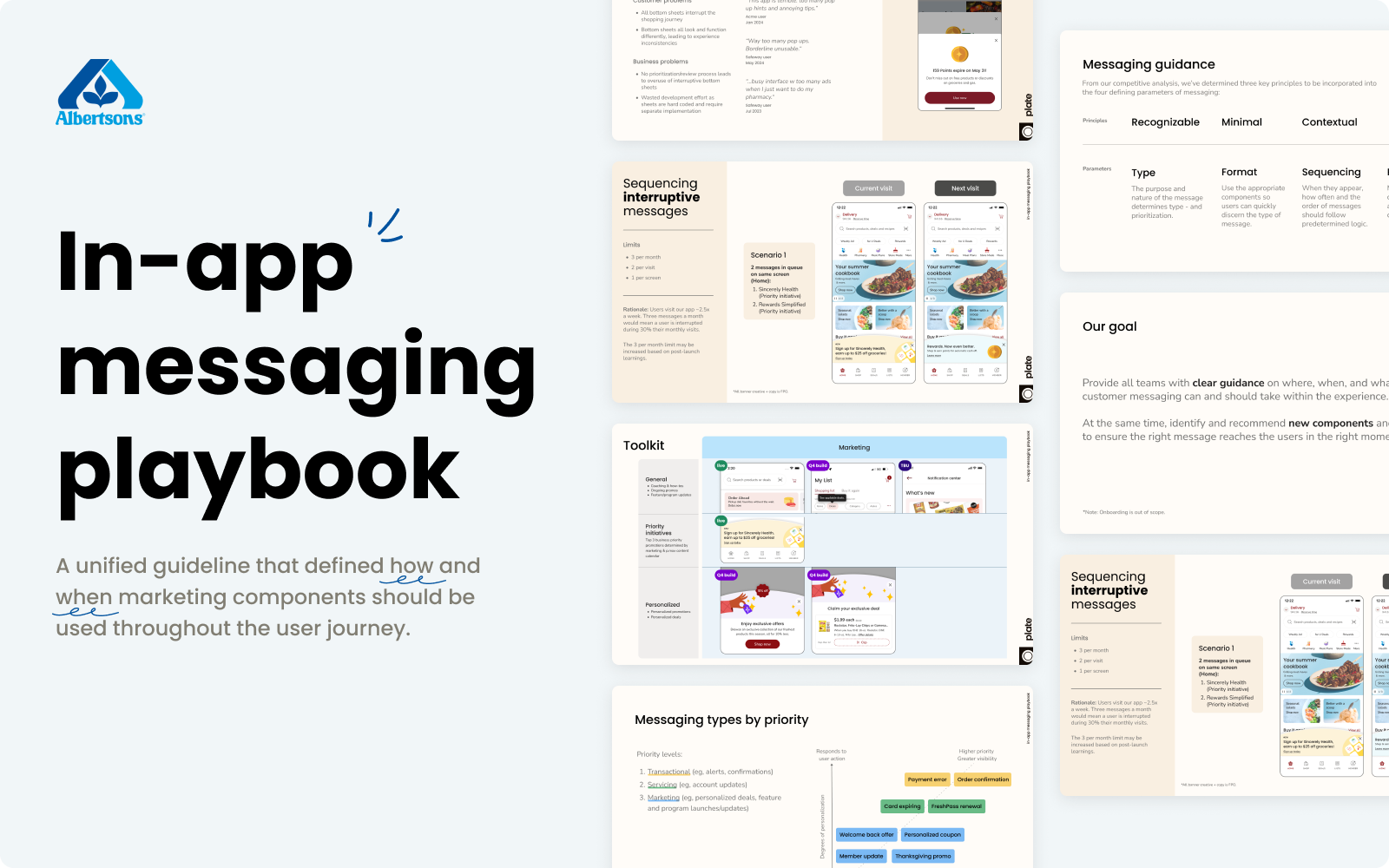
Content Strategy: In-app Messaging Playbook
Streamlined communication across product and cross-functional teams but also helped create a more cohesive and uninterrupted shopping experience, improving both user satisfaction and operational efficiency.
[Project Overview]
The shopping experience was being disrupted by excessive and poorly timed marketing messages, causing user frustration and a noticeable drop in key engagement metrics. To address this, I led the discovery and launch of a Messaging Playbook — a unified guideline that defined how and when marketing components should be used throughout the user journey.
[Industry]
E-commerce
[My Role]
Product Designer
[Platforms]
Mobile App
[Timeline]
1 quarter | 2024
[Collaboration]
Cross-functional team collaboration was a huge part of design work.
- 1 Product Manager
- 1 Content Strategist
- Merchandising Team
- Marketing Team
- Loyalty Team
- Flash Team

[Problem Statement]
There were too many interruptions in the shopping journey. These interruptions led to negative reviews & lower NPS, app uninstalls. Lack of proper tools and guidelines led to misuse and more interruptions.

[Goal]
Business Goal: Shorten the decision making time cross teams: provide all teams with clear guidance on where, when, and what form customer messaging can and should take within the experience.
New components development: identify and recommend new components and options to ensure the right message reaches the users in the right moment.
Customer Goal: Improve the end user experience, reduce conflict messages to 0.
[Solution]
- Published [in-app Messaging Playbook] to guide component usage and cadence on the app.
- New workflow to facilitate decision making between teams
**See [Deliverables] for details**
[Discovery & Research]
We have hosted workshops with cross-functional teams to understand the underlined problem:
→ Due to the lack of guidance on pop-up components usage and cadence, teams had to fight for the real estate on Home screen. It resulted in multiple sheets appearing on the same time, conflicted messaging delivered to the end users and interrupted their shopping journey.
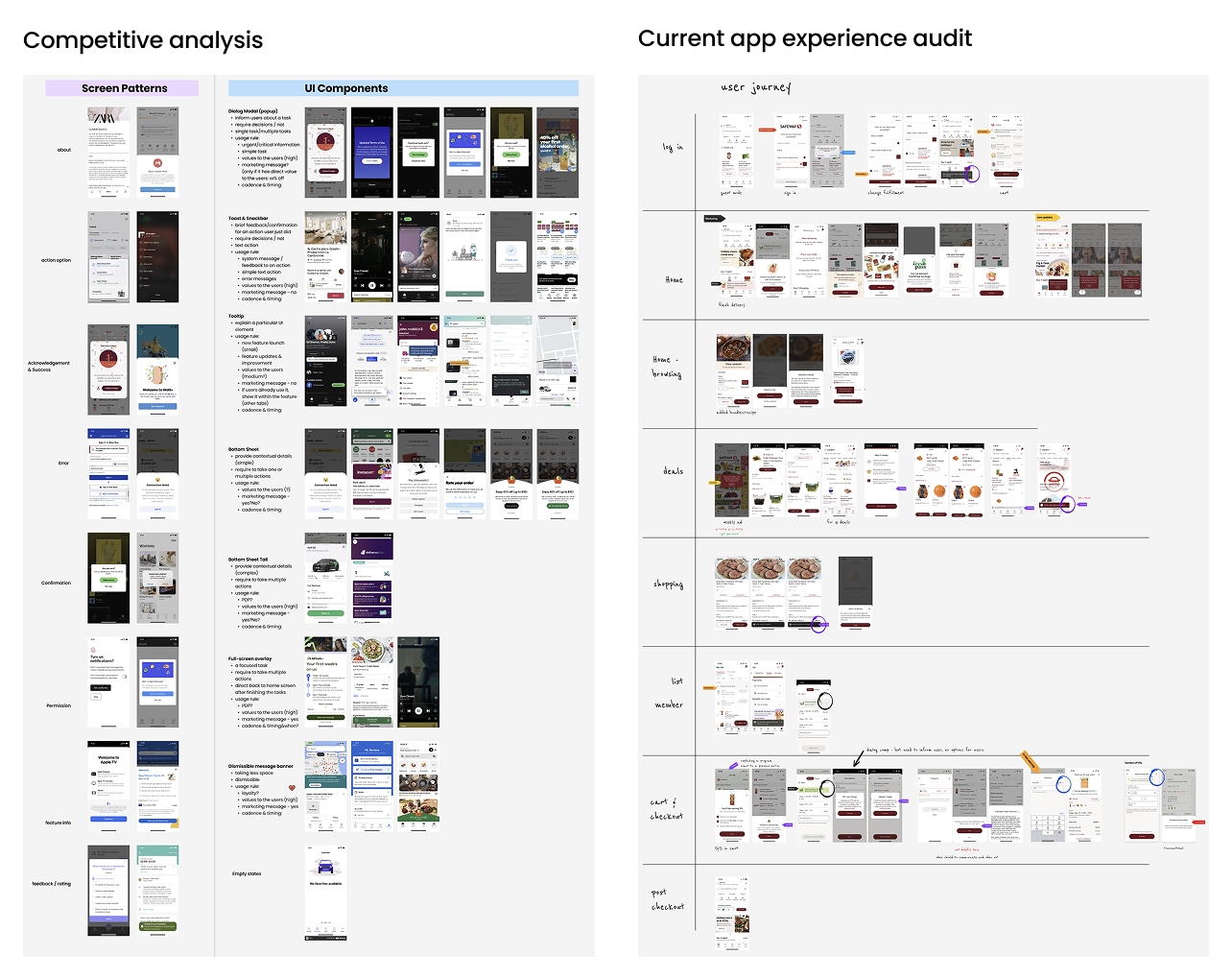
[Deliverables]
- In-App Messaging Playbook
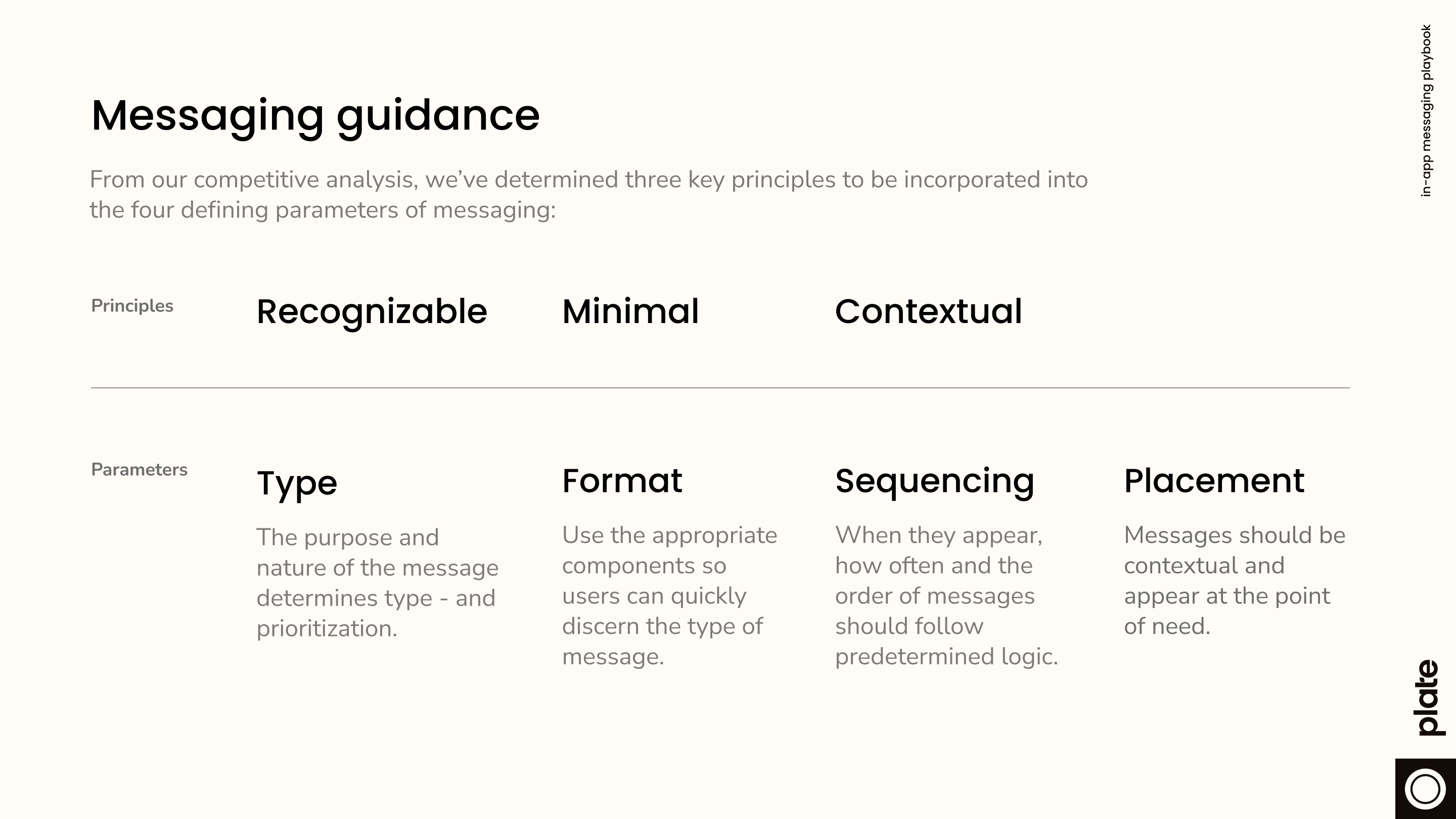
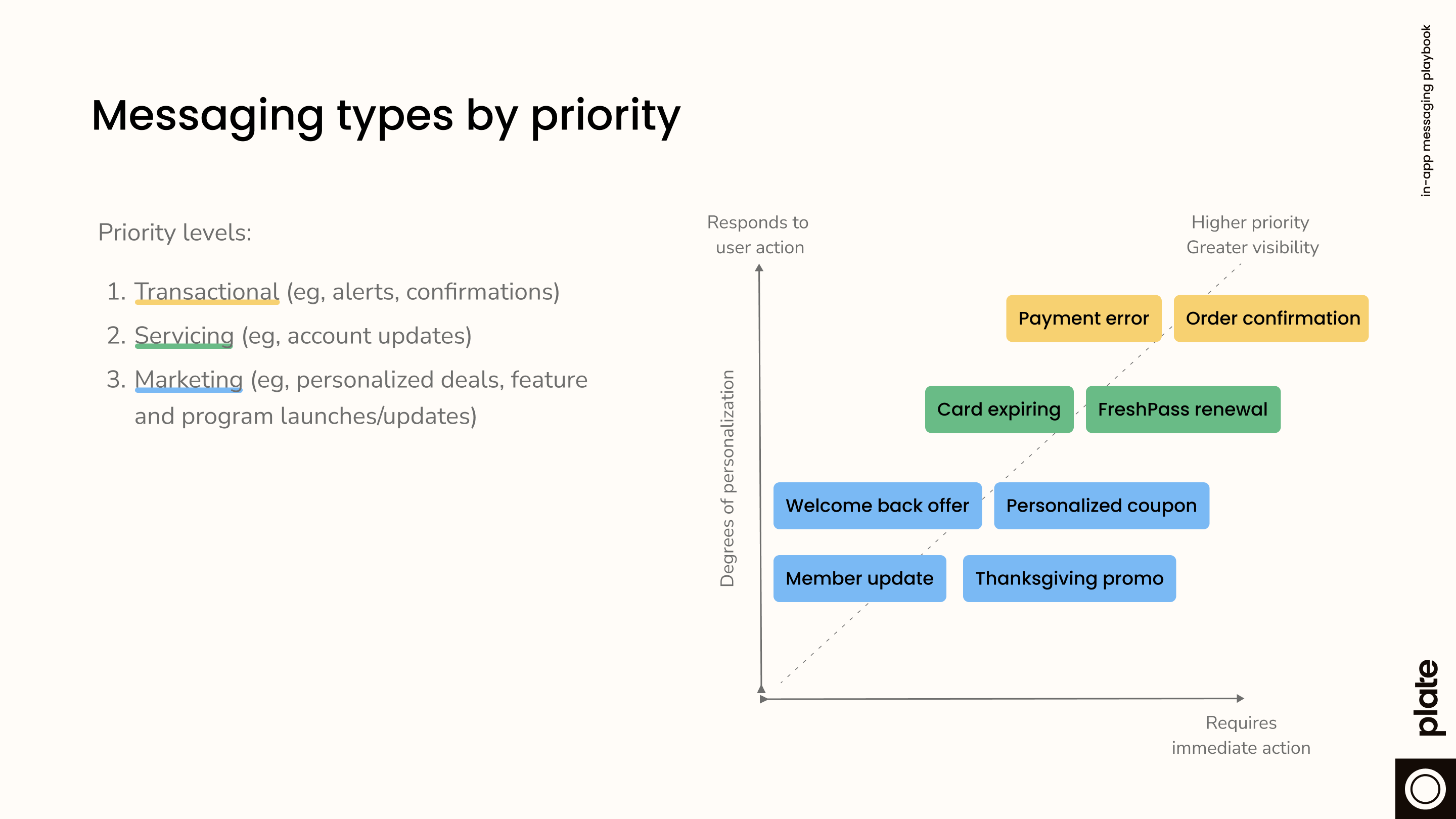

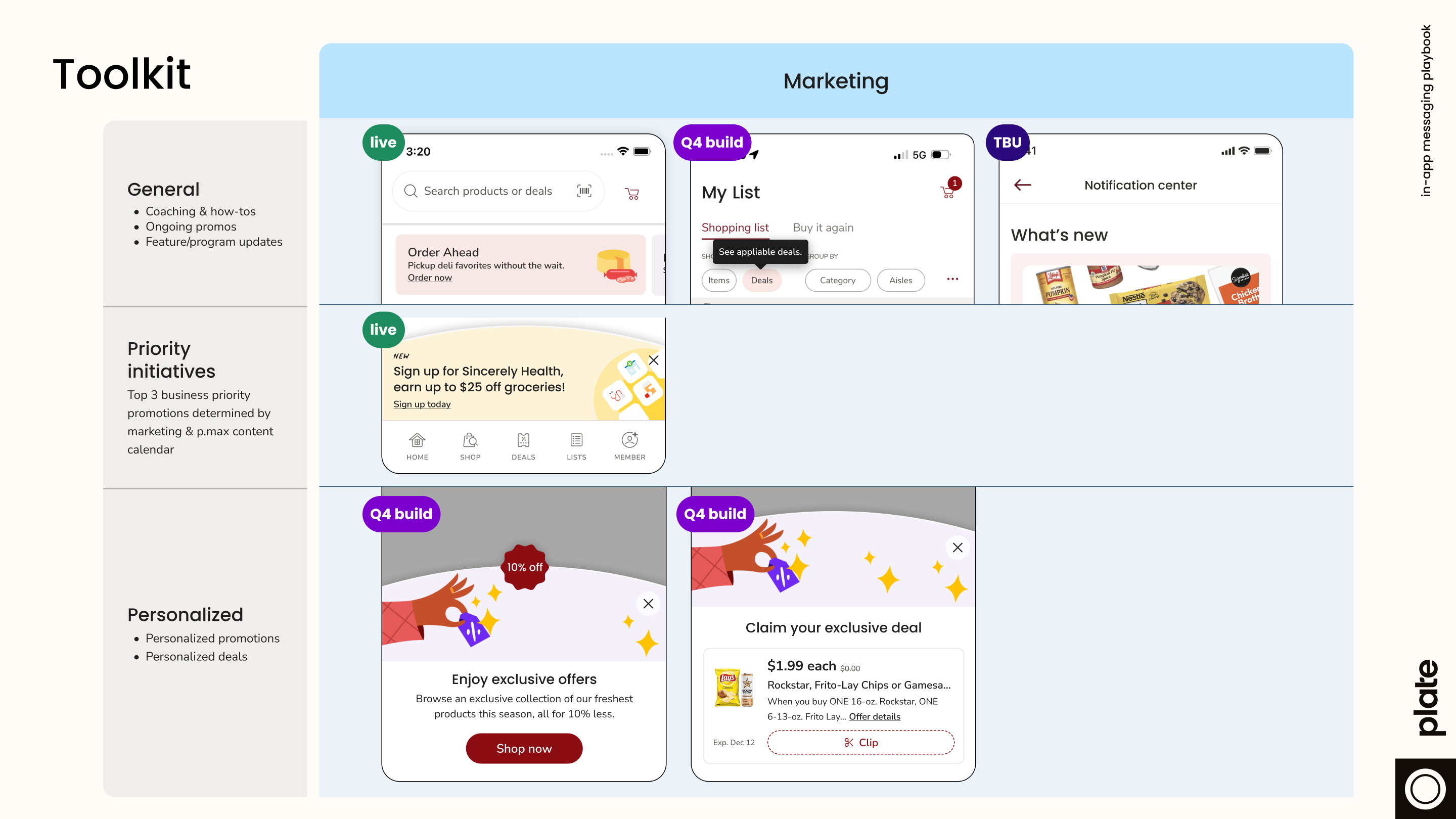

[Key Learnings]
- Collaboration: hosting fun workshops both individually and collectively can help aligning the goal more efficient.
- System Thinking Approach: rather than treating message interruptions as isolated UX issues, I viewed them as symptoms of a larger systemic misalignment between teams, tools, and processes. Multiple departments (Flash, Merch, Pharmacy, etc.) were pushing messages independently, each optimizing for their own goals. As a result, it created conflict and noise in the user journey.
Back
[Case 03]

Content Strategy: In-app Messaging Playbook
Streamlined communication across product and cross-functional teams but also helped create a more cohesive and uninterrupted shopping experience, improving both user satisfaction and operational efficiency.
[Project Overview]
The shopping experience was being disrupted by excessive and poorly timed marketing messages, causing user frustration and a noticeable drop in key engagement metrics. To address this, I led the discovery and launch of a Messaging Playbook — a unified guideline that defined how and when marketing components should be used throughout the user journey.
[Industry]
E-commerce
[My Role]
Product Designer
[Platforms]
Mobile App
[Timeline]
1 quarter | 2024
[Collaboration]
Cross-functional team collaboration was a huge part of design work.
- 1 Product Manager
- 1 Content Strategist
- Merchandising Team
- Marketing Team
- Loyalty Team
- Flash Team

[Problem Statement]
There were too many interruptions in the shopping journey. These interruptions led to negative reviews & lower NPS, app uninstalls. Lack of proper tools and guidelines led to misuse and more interruptions.

[Goal]
Business Goal: Shorten the decision making time cross teams: provide all teams with clear guidance on where, when, and what form customer messaging can and should take within the experience.
New components development: identify and recommend new components and options to ensure the right message reaches the users in the right moment.
Customer Goal: Improve the end user experience, reduce conflict messages to 0.
[Solution]
- Published [in-app Messaging Playbook] to guide component usage and cadence on the app.
- New workflow to facilitate decision making between teams
**See [Deliverables] for details**
[Discovery & Research]
We have hosted workshops with cross-functional teams to understand the underlined problem:
→ Due to the lack of guidance on pop-up components usage and cadence, teams had to fight for the real estate on Home screen. It resulted in multiple sheets appearing on the same time, conflicted messaging delivered to the end users and interrupted their shopping journey.

[Deliverables]
- In-App Messaging Playbook





[Key Learnings]
- Collaboration: hosting fun workshops both individually and collectively can help aligning the goal more efficient.
- System Thinking Approach: rather than treating message interruptions as isolated UX issues, I viewed them as symptoms of a larger systemic misalignment between teams, tools, and processes. Multiple departments (Flash, Merch, Pharmacy, etc.) were pushing messages independently, each optimizing for their own goals. As a result, it created conflict and noise in the user journey.
Back
[Case 03]

Content Strategy: In-app Messaging Playbook
Streamlined communication across product and cross-functional teams but also helped create a more cohesive and uninterrupted shopping experience, improving both user satisfaction and operational efficiency.
[Project Overview]
The shopping experience was being disrupted by excessive and poorly timed marketing messages, causing user frustration and a noticeable drop in key engagement metrics. To address this, I led the discovery and launch of a Messaging Playbook — a unified guideline that defined how and when marketing components should be used throughout the user journey.
[Industry]
E-commerce
[My Role]
Product Designer
[Platforms]
Mobile App
[Timeline]
1 quarter | 2024
[Collaboration]
Cross-functional team collaboration was a huge part of design work.
- 1 Product Manager
- 1 Content Strategist
- Merchandising Team
- Marketing Team
- Loyalty Team
- Flash Team

[Problem Statement]
There were too many interruptions in the shopping journey. These interruptions led to negative reviews & lower NPS, app uninstalls. Lack of proper tools and guidelines led to misuse and more interruptions.

[Goal]
Business Goal: Shorten the decision making time cross teams: provide all teams with clear guidance on where, when, and what form customer messaging can and should take within the experience.
New components development: identify and recommend new components and options to ensure the right message reaches the users in the right moment.
Customer Goal: Improve the end user experience, reduce conflict messages to 0.
[Solution]
- Published [in-app Messaging Playbook] to guide component usage and cadence on the app.
- New workflow to facilitate decision making between teams
**See [Deliverables] for details**
[Discovery & Research]
We have hosted workshops with cross-functional teams to understand the underlined problem:
→ Due to the lack of guidance on pop-up components usage and cadence, teams had to fight for the real estate on Home screen. It resulted in multiple sheets appearing on the same time, conflicted messaging delivered to the end users and interrupted their shopping journey.

[Deliverables]
- In-App Messaging Playbook





[Key Learnings]
- Collaboration: hosting fun workshops both individually and collectively can help aligning the goal more efficient.
- System Thinking Approach: rather than treating message interruptions as isolated UX issues, I viewed them as symptoms of a larger systemic misalignment between teams, tools, and processes. Multiple departments (Flash, Merch, Pharmacy, etc.) were pushing messages independently, each optimizing for their own goals. As a result, it created conflict and noise in the user journey.